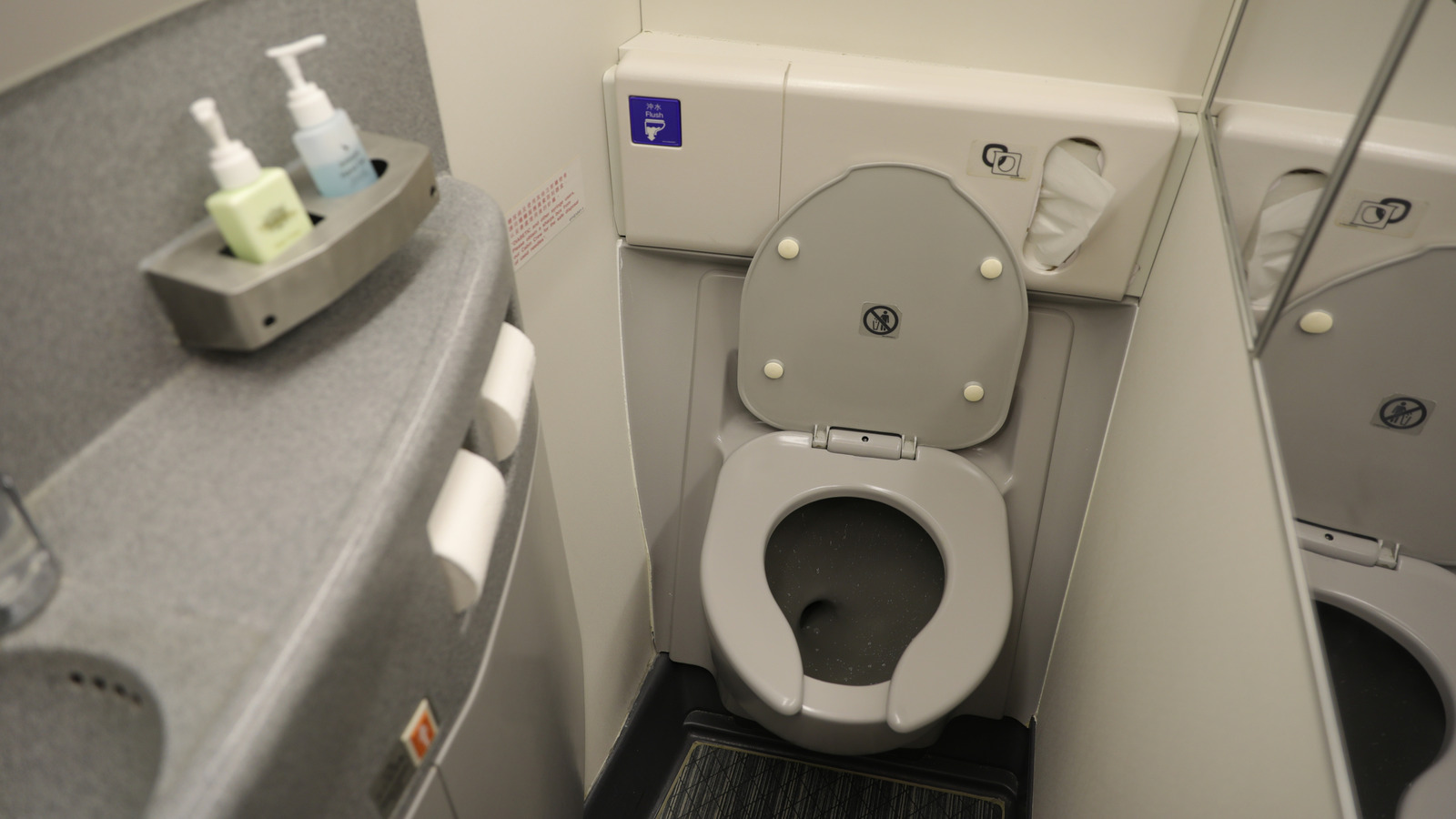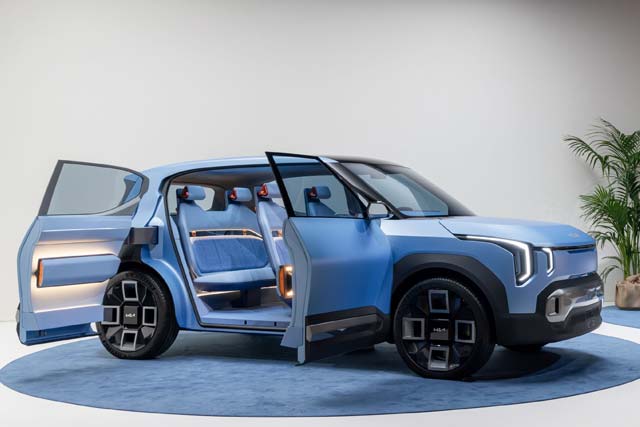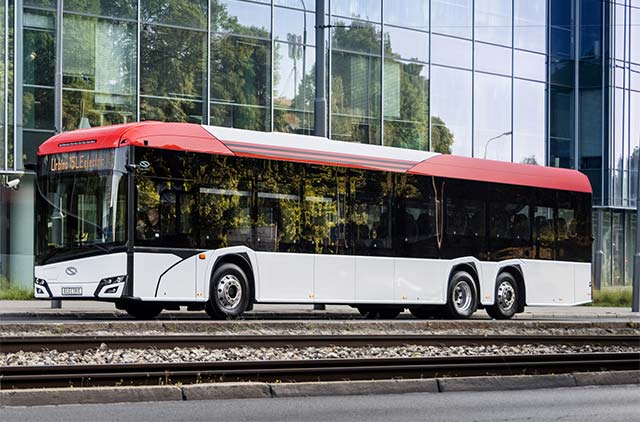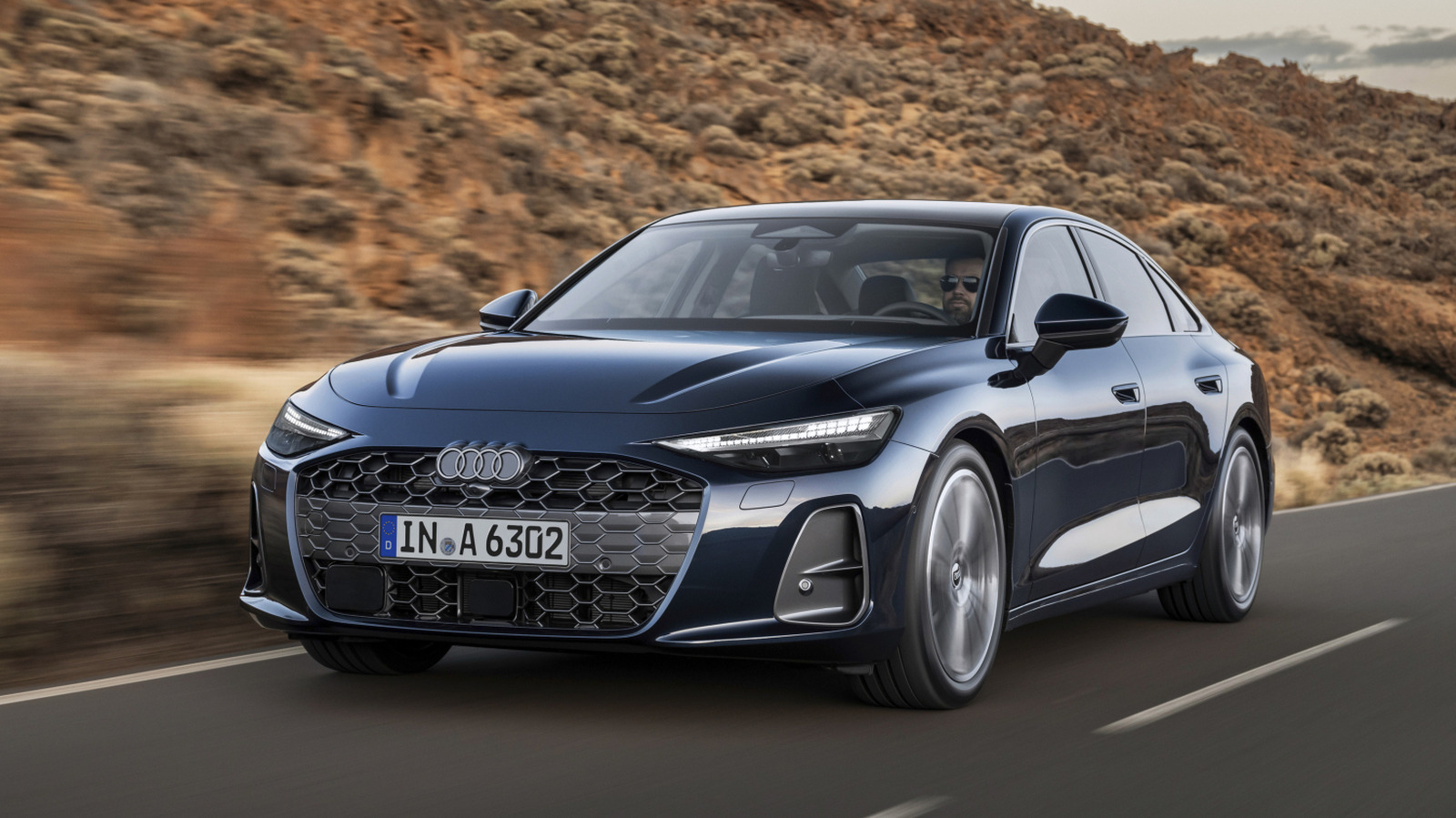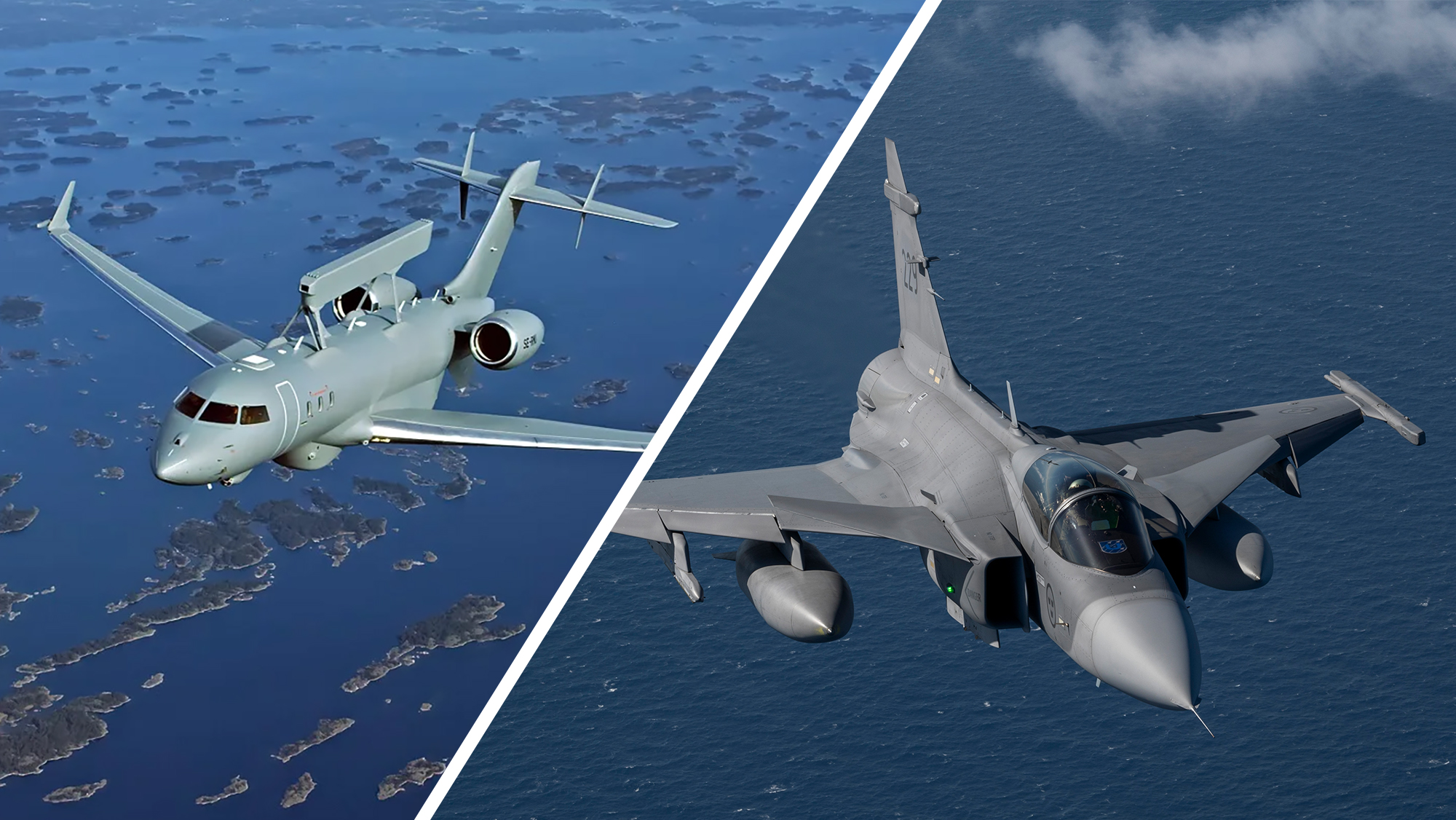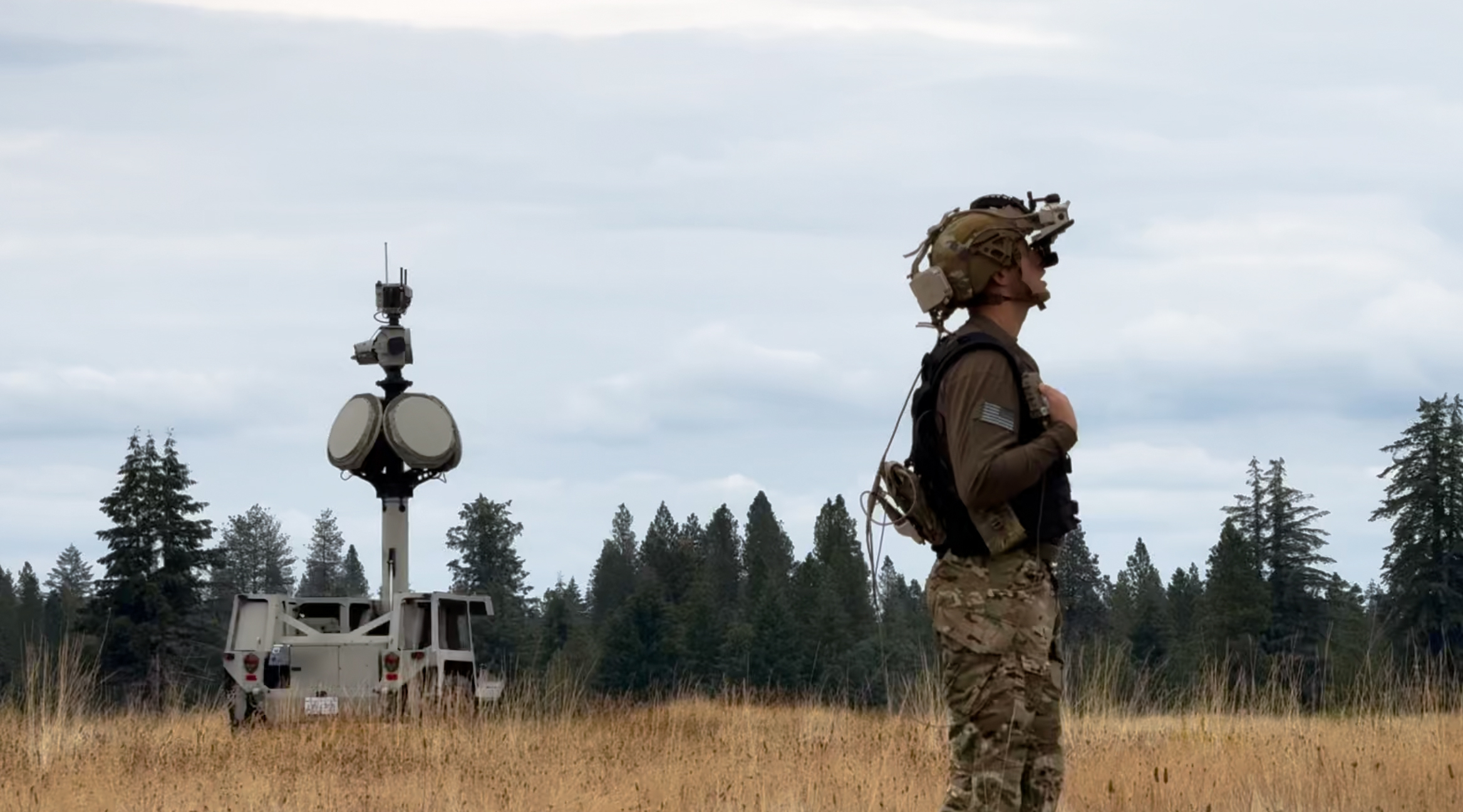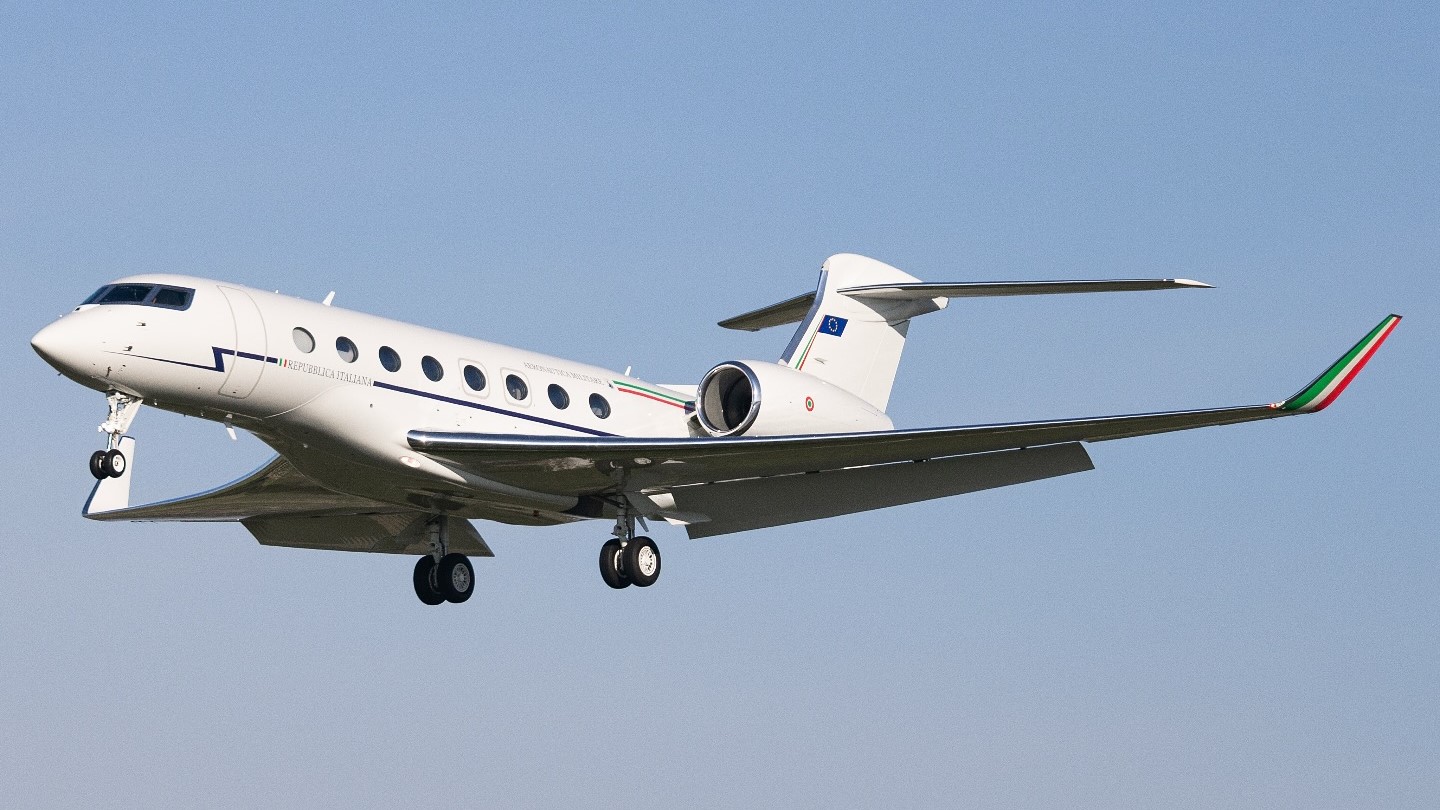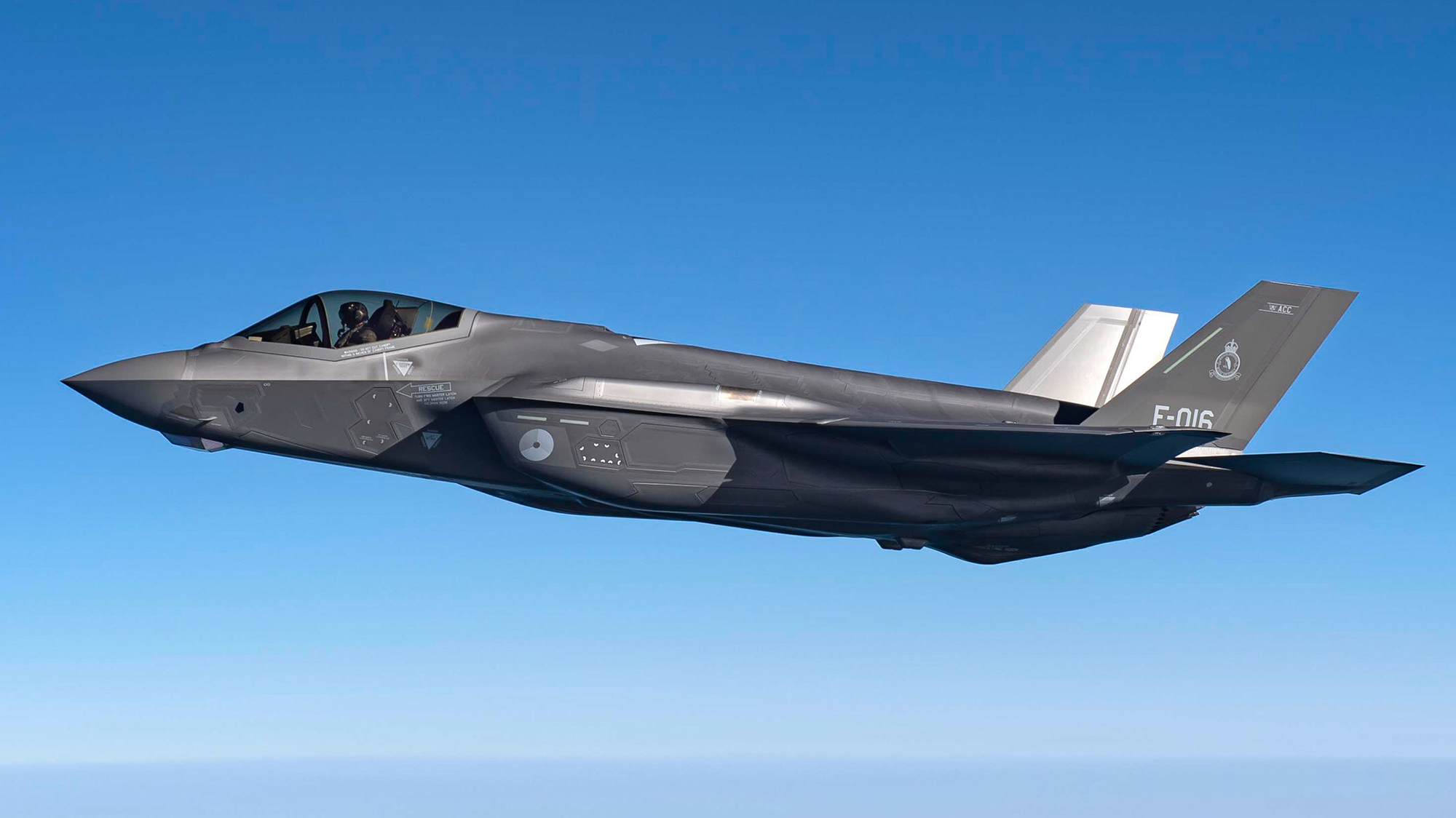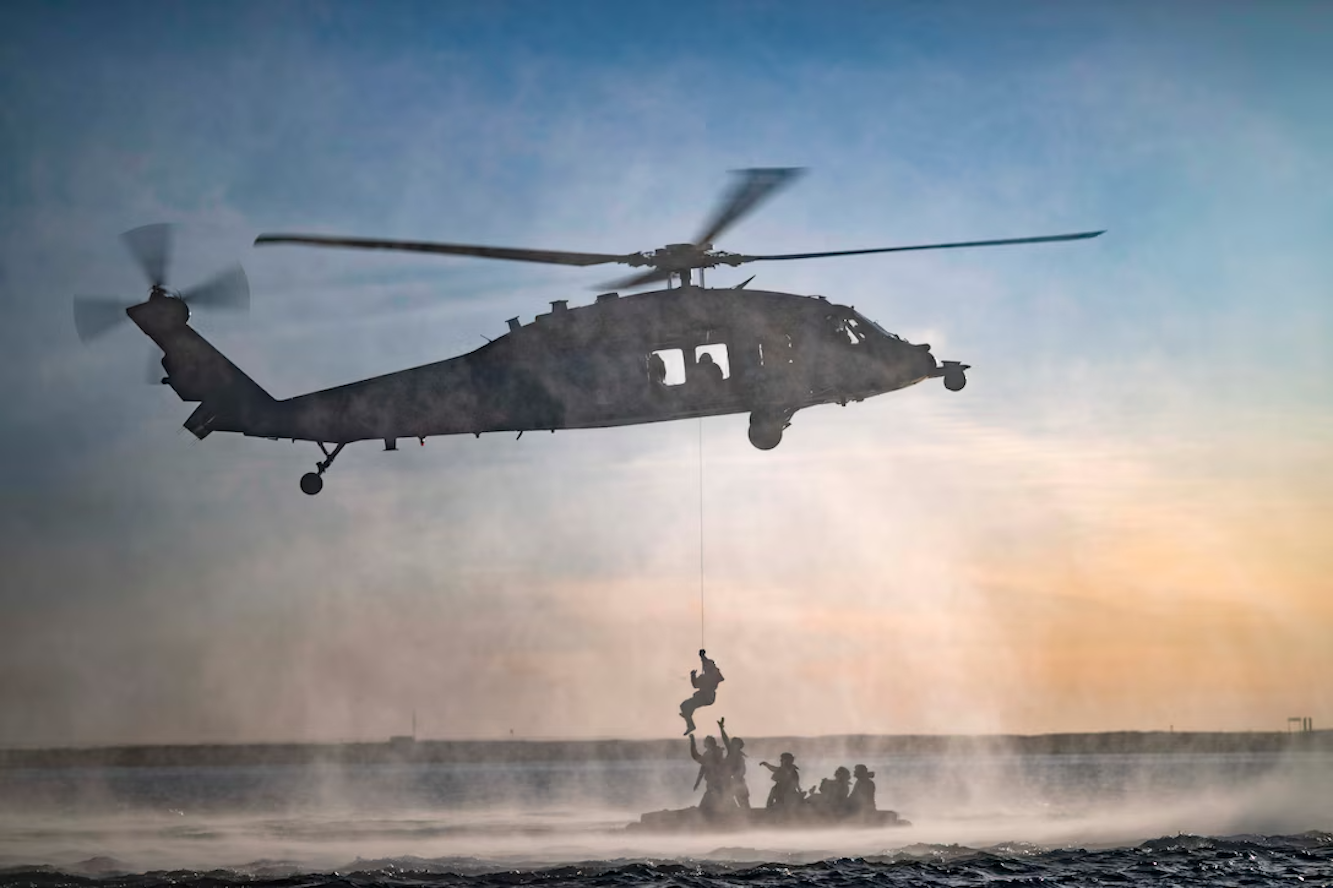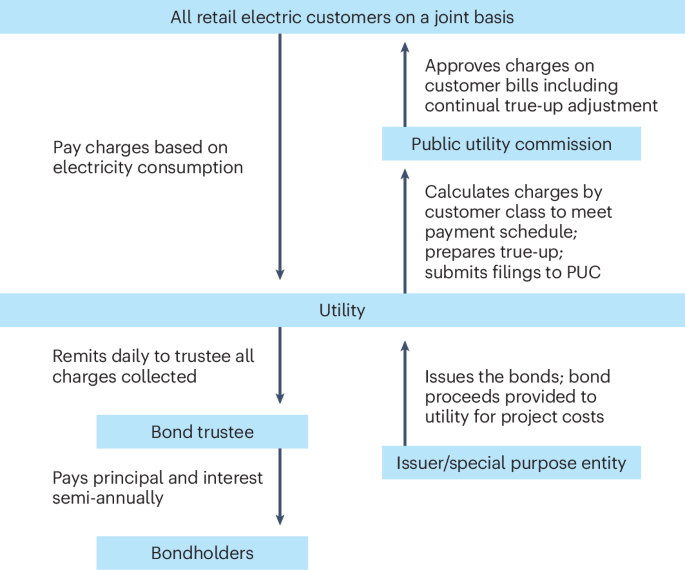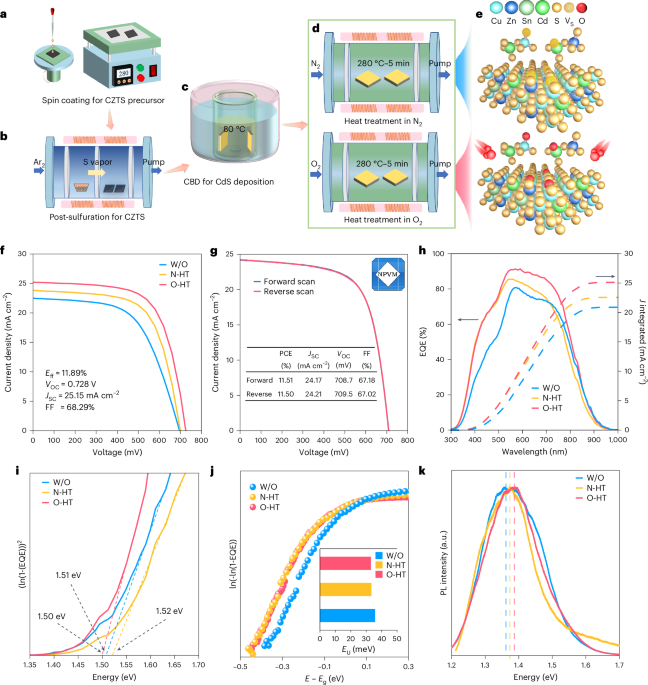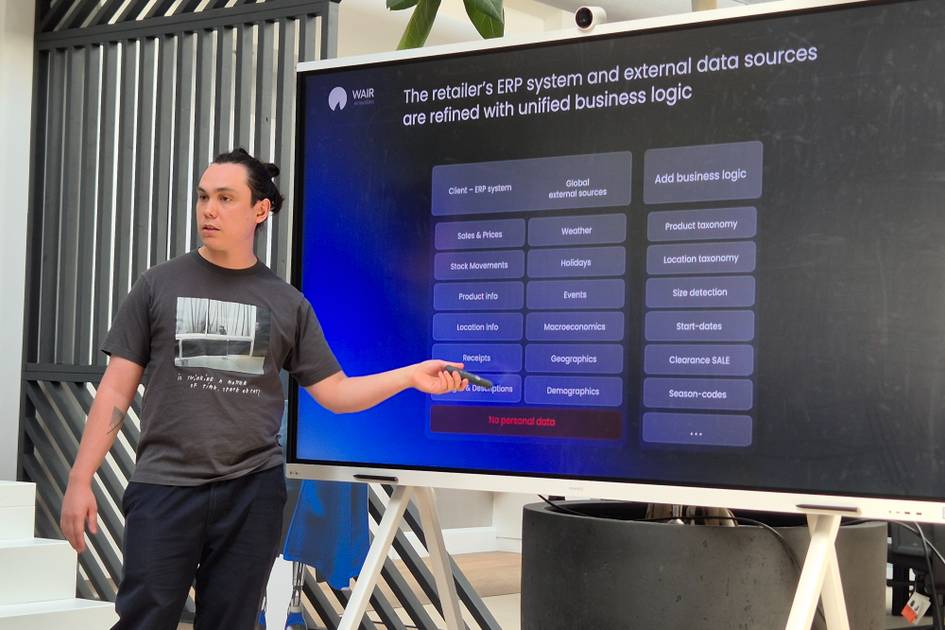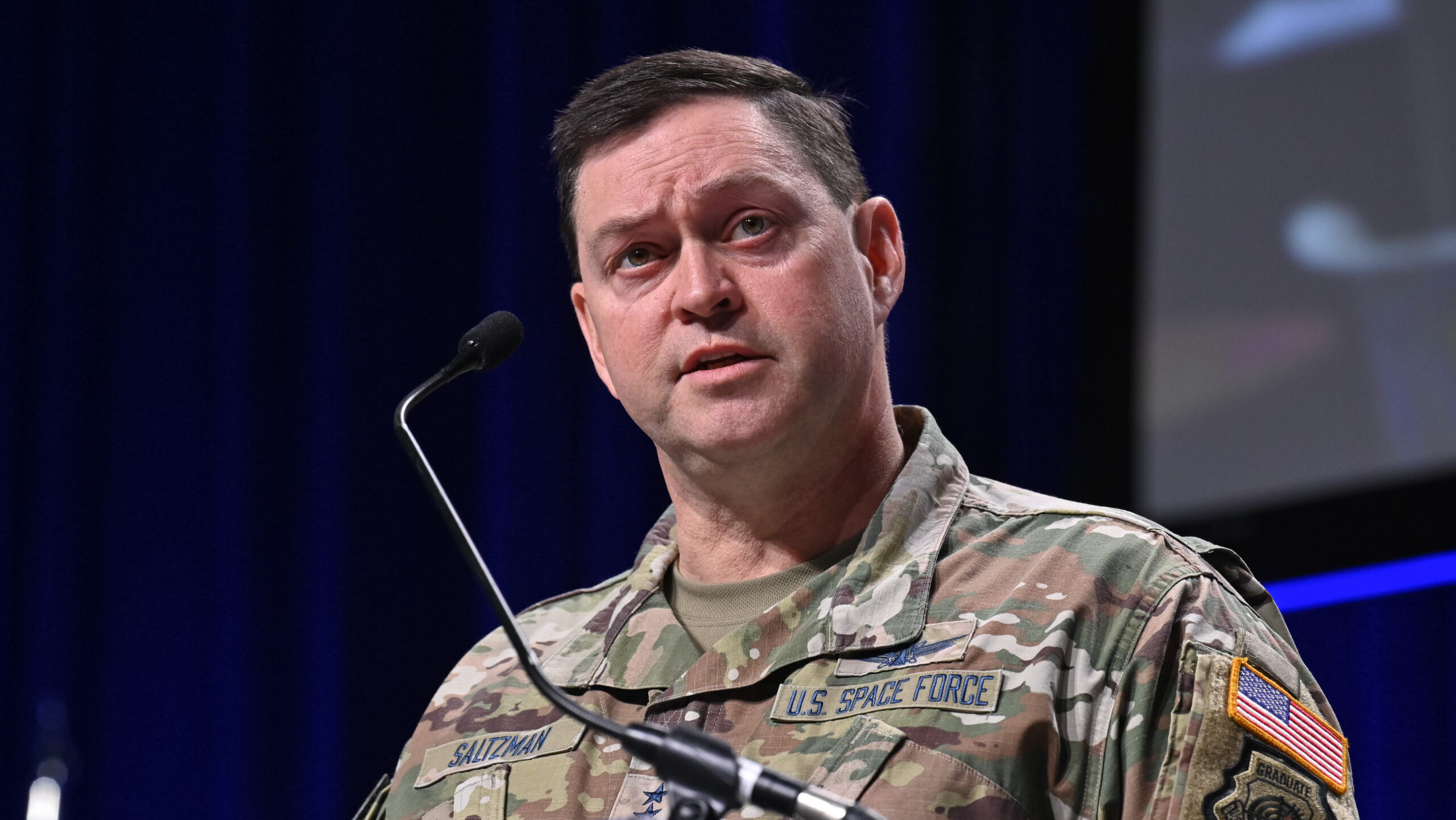Army eyeing first Human Machine Integrated Formations in 2027, common controller for robotics
“We don’t want a robot wandering off the battlefield. We don’t want one being taken over by a potential adversary,” RCCTO Director Lt. Gen. Robert Rasch told Breaking Defense.
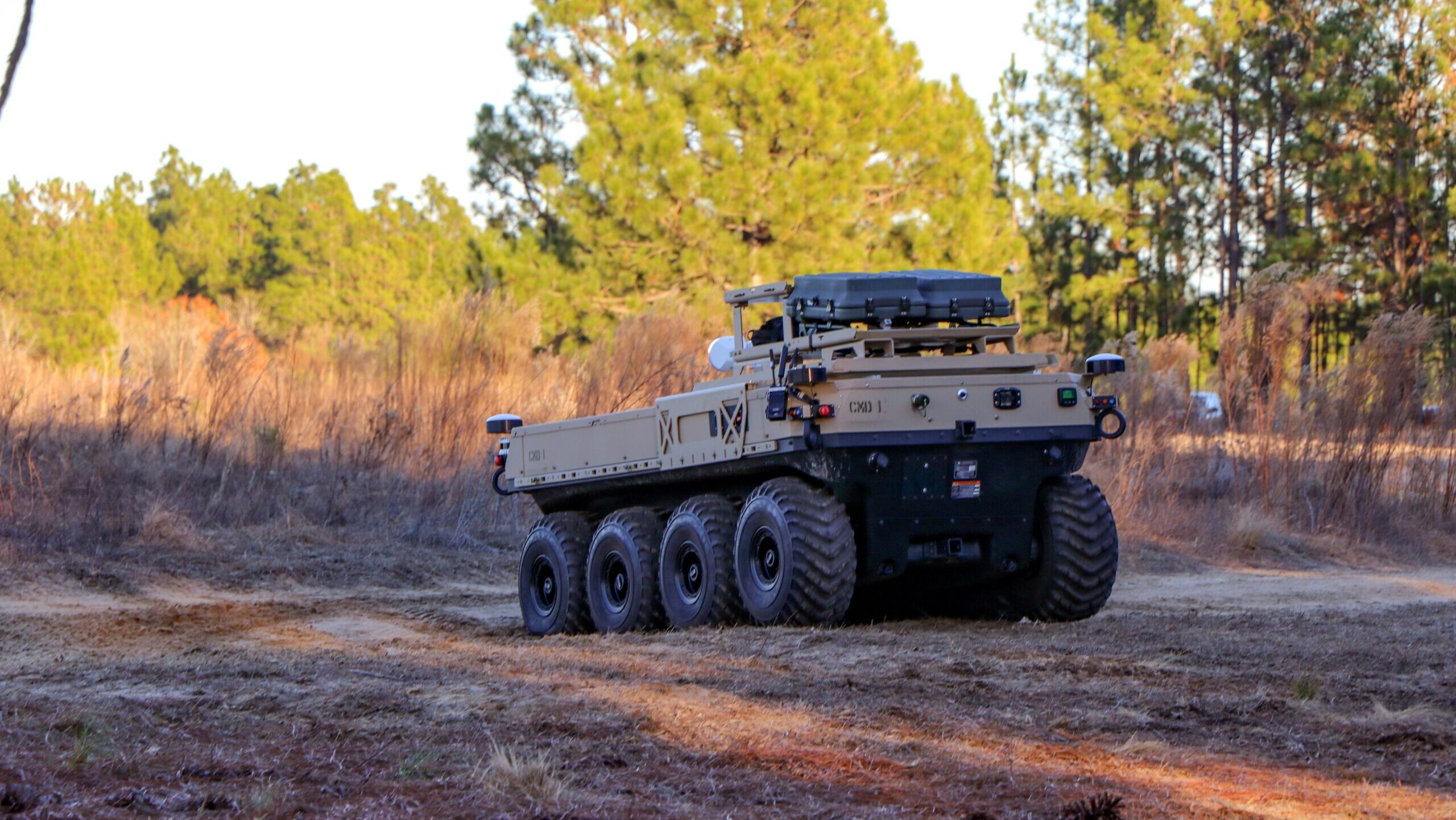

US Army DEVCOM C5ISR Center personnel demonstrate their technologies during Sandhills Project in December 2023. (US Army/Dan Lafontaine)
WASHINGTON — As the US Army explores how soldiers will use a slew of new ground and aerial drones in combat, it is moving out with a multi-phased plan that aims to field new Human Machine Integrated Formation (HMIF) in 2027, according to service officials.
“That’s an armor configuration and that’s an infantry configuration,” Lt. Col. Jonathan Judy, the military deputy charged with HMIF, told an audience in Huntsville, Ala. late last month. “HMIF platoons will incorporate both ground and air platforms, payloads and enablers, in addition to the control vehicle that soldiers will operate out of.
“HMIF will bring robotic systems into formations with the goal of having machines, not soldiers, make first contact with the enemy,” he added.
The service currently has a host of different robotic initiatives in the works with the Rapid Capabilities and Critical Technologies Office (RCCTO) diving into how soldiers can employ the newer weapons as part of the HMIF initiative. While the plan continues to evolve, and could be reshaped, as it stands today it is broken up into three developmental increments that will run through fiscal 2030.
Under increment 1, spanning the FY24 though FY27 timeframe, the service is working on a common controller for both ground and aerial drones. However, that device/setup will be “slightly different” for dismounted infantry soldiers — akin to something like the Nett Warrior device — while soldiers inside armored formations will be operating the robots from a controller integrated into the back of Armored Multi-Purpose Vehicles (AMPVs).
While this is the vision, RCCTO Director Lt. Gen. Robert Rasch told Breaking Defense it’s still a work in progress with a lot of lingering question marks that need to be addressed.
“Today, everything has its own controller. How do we collapse that into a viewer set, potentially even down to one … by collapsing the software control mechanisms from all those different autonomous platforms?” the three-star general added.
When soldiers receive that first HMIF iteration of tech, the common controllers will still be a work in progress and poised to slowly evolve over the remaining decade with the rest of the initiative, Judy said. As new increments are rolled out, they intend to expand how soldiers use the robots on the ground and in the skies.
Increment 1, for example, focuses on soldiers using drones in a more limited capacity, think reconnaissance missions or concealing a unit’s location. With limited autonomy at this point, more soldiers will be required to teleoperate ground robots with payloads like the Common Operated Weapon Station-Javelin or Switchblade 600 at a closer distance than later on.
Then for HMIF increment 2, development is slated to run from FY27 through FY29 and the service wants to outfit those ground vehicles with additional autonomy capabilities, which could reduce the number of soldiers required to operate them and provide a greater standoff distance. That, in theory, would allow the soldiers to also use the ground robots for attack, direct fire suppression missions.
Under increment 3 development, running from FY28 through FY30, the Army envisions expanding that mission set into the attack and penetration operation realm, as well as for autonomous sustainment and tactical maneuver.
“What is it that’s new [with HMIF] that we’re going to see that we haven’t seen before? It’s that level of hardening of this equipment so that we don’t need a whole bunch of contractors to make it run,” Rasch said.
“We’re spending a lot of effort on looking at redundant network capabilities for robotics because you just can’t have a primary method,” the three-star general added. “We don’t want a robot wandering off the battlefield. We don’t want one being taken over by a potential adversary.”
As Rasch and Judy continue the HMIF push, they are not working in isolation: New ground and aerial drones are being experimented with at different venues like the Sandhills Project and Project Convergence.
Out in the desert sands at Ft. Irwin for Project Convergence Capstone 5 this year, the Army experimented with its Autonomous Multi-domain Launcher (AML) and another produced by a Raytheon-team called DeepStrike. Autonomous versions of General Dynamics Land Systems Small Multipurpose Equipment Transport (SMET) robotic mules with various payloads were also put to the test, along with a prototype of a Medium Multipurpose Equipment Transport (MMET). (The Army is expected to launch a MMET competition later this year.)
Those unmanned ground vehicles are all in various stages of development and could potentially make their way into the Army’s HMIF, as could a future Robotic Combat Vehicle (RCV), if service leaders decide to continue pushing the program forward.












